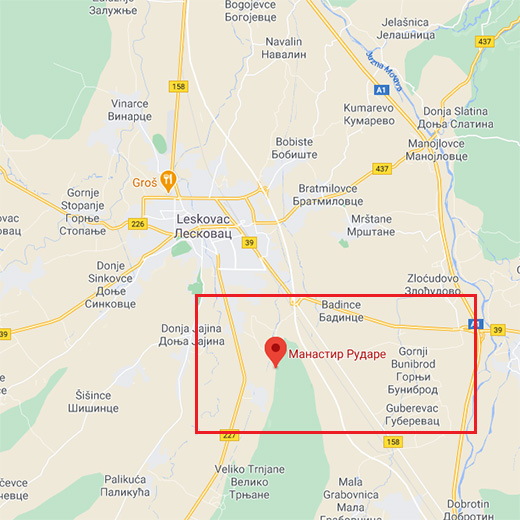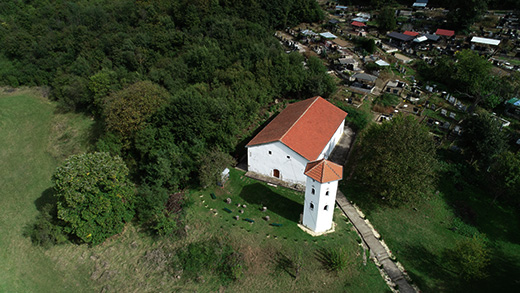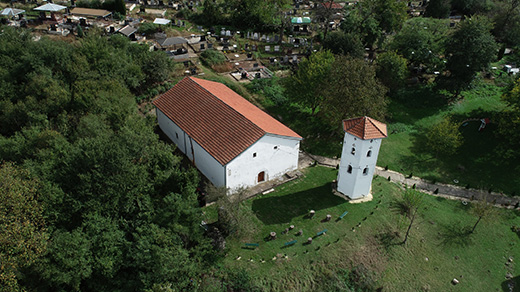Rudare Monastery
Protected cultural monument of great significance, listed as SK 213 at the Central registry of the Republic Institute for the protection of the cultural monuments.
Rudare MonasteryLeskovac, Jablanički district
Where is it located
The church of St Paraskeva in Rudare is located at the slopes of mountain Kukavica, on the Rudare slope which gently flows into the wide Leskovac basin.

History, research
It is believed that the church was erected on the foundations of an early Christian basilica. The basilica is believed to have been destroyed in the Slav invasion in VI-VII century, and the first restauration came about in the Nemanjić era. During the Middle Ages there was a monastery here and during the Ottoman rule, the monastery was a spiritual sanctuary of Leskovac inhabitants. It was destroyed after the great migration of the Serbs and renewed again in 1799, which is testified by an inscription carved above the entrance. The temple was damaged again in 1814, but was quickly renewed. Felix Kaniz, Austrian painter and travel writer in the late XIX century writes that this temple “with white walls, former monastery, is a favourite gathering point and favourite picnic spot for Leskovac inhabitants”.


Description
The Church of St. Paraskeva is a single nave edifice with a narthex on the western side and a semicircular apse in the east, vaulted with semicircular vault. The façade is flat, simple, plastered and painted in white.
Iconostasis was done by a famous icon painter of that time, Djordje Zografski. Some frescoes are very rare in their theme and the way they were made, like the fresco of the arch angel Rafail and the founder of Egyptian desert monasticism.
In time, a village cemetery grew around the church.
Painting
Today’s iconography is the one made after the renovation in 1799, and the examination of the walls determined that there are traces of an earlier iconography underneath.
Monastery konak
The monastery konak was built in 1815. The ground floor is made of crushed stone and the first floor is bundwerk, common for this area. The edifice of larger dimensions is a representative piece of Balkan architecture, one of the finest in this part of Serbia.
The base of the konak is T shaped, in the ground floor there is a large hall from which a wooden staircase leads upstairs. On the first floor, the hall leads to a porch which is also elevated which makes it especially interesting.
Due to its characteristics, the konak was restored in 1951, but the time takes its tall and a new restauration is needed.
Folk lore and belief
Monastery church in Rudare is dedicated to the holy martyr Paraskeva the Roman, whom common people know as St Petka, the Christian saint who perished in the second century in today’s Italy. She is very much revered in the Leskovac area.
Julka Kuzmanović Cvetkovićarcheologist
